
I, Tonya: "Those bitches didn't even know what hit'em."
The ice witch is coming to the cinema: a crazy true story and a lot of black humour tell how Tonya Harding became the most hated person of the last twenty years.
Tonya Harding (Margot Robbie) is not a natural at figure skating. What's more, the swearing, chain-smoking American from a poor background is pretty much the opposite of the ice princess she likes to be portrayed as in sport. Nevertheless, in 1987, at the age of just 17, she became the first American woman to stand the triple Axel under competitive conditions. Her great rival: compatriot Nancy Kerrigan (Caitlin Carver). Elegant, graceful and the nation's favourite.
They couldn't have been more different.
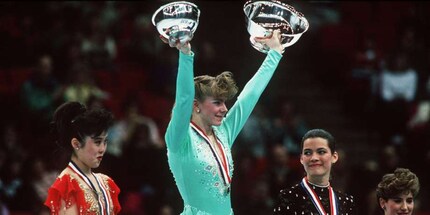
Shortly before the 1994 Winter Olympics in Lillehammer, when the competition between the two athletes came to a head, Kerrigan was attacked. She is hit in the knee with an iron bar. The perpetrator? Unknown. But Tonya Harding goes down as the villain of the biggest scandal in figure skating history, and the myth of the "Ice Witch" is born.
Back to the beginning, where the evil came from
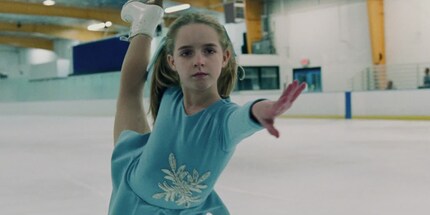
The filmmakers certainly didn't choose an easy task. After all, the audience is expected to sympathise with the ice witch at least to some extent. Director Craig Gillespie and screenwriter Steve Rogers achieve this by going back to the very beginning.
So "I, Tonya" is not the story of two rivals who fight each other to the bitter end. Rather, it is the story of little Tonya, who is drilled from childhood and brutally abused by her mother LaVona Harding (Allison Janney).
"You'll go on wet then," scolds LaVona when Tonya, just four years old, runs urine down her tights during training because her mother won't let her go to the toilet. She punishes unsuccessful free skating with hard blows. And when Tonya tries to make friends with other girls, her mum intervenes immediately: "Tonya, what are you doing? She's your enemy."
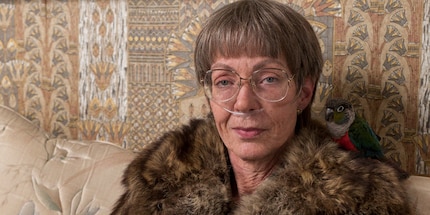
When Harding meets her first boyfriend and later husband Jeff Gillooly (Sebastian Stan) at the age of fifteen, life finally seems to grant her some happiness. A fallacy. The constant beatings from her husband - who is every bit as violent as her mother - poison her just as much as the corrosive smoke from LaVona's cigarettes.
The one, all-poisoning feeling
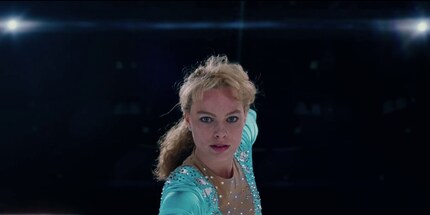
One thing is obvious: although "I, Tonya" is based on biographical facts and real statements from those involved, Harding is the main voice in this extraordinary biopic. As is usual in docutainment formats, re-enacted interviews alternate with re-enacted scenes. And when Tonya talks about the incident towards the middle of the film, her lips curl into a sarcastic smile. "Violence?" she asks mockingly, almost incredulously, "Nancy gets hit once and the whole world freaks out. For me, violence is a permanent condition."
A statement that hits the mark emotionally.
Because Harding has known nothing but bullying, drill and violence in her life. Even before "the incident", she was the dregs of the scene, who people hated to watch win.
For the first time, it becomes clear that director Gillespie doesn't just want to arouse pity for his main character or even let the film degenerate into Harding's comeback tour. Instead, he thematises the demonic feeling that spreads through all our souls when we feel we have been treated unfairly. When we succumb to the temptation to think that life only gives us one chance and we have to defend it come hell or high water. For Tonya, figure skating is that one chance.
And Harding learnt early on that the world is out to get her. Every single damn day.
The triple Axel
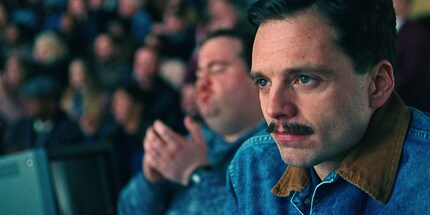
She may not be a natural, but thanks to her muscular physique, she masters her craft perfectly. The fact that she is the first American woman to perform the triple Axel under competitive conditions only serves to reinforce her feeling. A jump so incredibly difficult that only six other women have managed it to date.
And yet Harding never received the recognition she deserved. Starting with the swearing and beating mother, the abusive and no less violent husband and the judges at the edge of the rink.
The latter refuse to recognise her talent because she doesn't fit the image of the American ice princess. Her expressions are too boorish, the make-up she puts on herself too colourful. And the costumes, which Harding sews herself for lack of money, are too glittery. Tonya is the black sheep of figure skating. But with the triple Axel, she not only finds her place in the history books, but also gives the figure skating establishment the middle finger.
"All those people who said I couldn't do it... well, fuck you! I did it," says Tonya Harding off-camera.
America doesn't like that at all.
Aftermath - do you want to see the film?
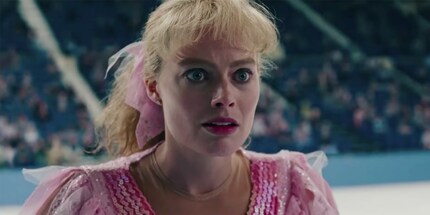
To this day, the circumstances that led to Kerrigan's shattered kneecap have not been fully clarified. The film has a clear opinion on the extent to which Tonya was privy to the plans of husband Gillooly and bodyguard Eckhardt.
Margot Robbie proves her acting talent in her portrayal of the ice hooligan. Sebastian Stan, previously only known as the "Winter Soldier" in Marvel's comic epic "Captain America: The Winter Soldier", delivers the biggest acting surprise as husband Jeff Gillooly. They are all upstaged by Allison Janney as mother LaVona Harding. Her performance as the chain-smoking and abusive mother was rightly honoured with the Golden Globe Award for Best Supporting Actress. She is coarse, unyielding and her facial expressions reflect the doggedness in every scene.
Gillespie skilfully plays with the image of the beautiful princess on the one hand, and the jealous arch-rival on the other. The problem: the actors are better than the film itself. It is in the second half, after the incident, that "I, Tonya" runs out of steam. Unnecessary lengths creep in and make the film seem more drawn out than its two-hour running time actually allows.
In addition, Gillespie and Rogers have to put up with the accusation of having sided too much with Harding. This is exemplified by the fact that rival Nancy Kerrigan doesn't get to say a single word in the film - apart from the snivelling lamentations after the assassination.
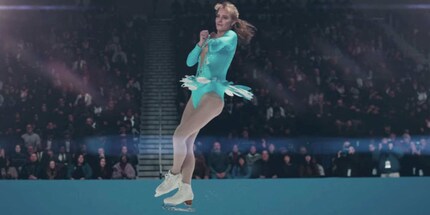
But the film's craftsmanship is convincing. In its figure skating scenes, two professional skaters were hired especially for the film, only for Margot Robbie's face to be superimposed on the figure skaters by computer. If the triple Axel scene doesn't make you wonder how the hell the film-makers managed to pull it off, you haven't been watching properly. In fact, if you compare the freestyle scenes with archive footage, it becomes obvious how much effort was put into recreating every last detail. The makers deserve the greatest respect here.
Thus, "I, Tonya" has become a daring character study that is particularly convincing in terms of acting, but less so in terms of content, because the suspense doesn't last until the end. This is by no means to say that the film is not worth seeing - on the contrary. It even manages to create unexpected sympathy for a woman who is usually portrayed by the media as evil personified.
However, he is a long way from the perfection of a flawlessly executed triple Axel followed by a double toe loop. Nevertheless: Go, see it!
I write about technology as if it were cinema, and about films as if they were real life. Between bits and blockbusters, I’m after stories that move people, not just generate clicks. And yes – sometimes I listen to film scores louder than I probably should.
From the latest iPhone to the return of 80s fashion. The editorial team will help you make sense of it all.
Show all